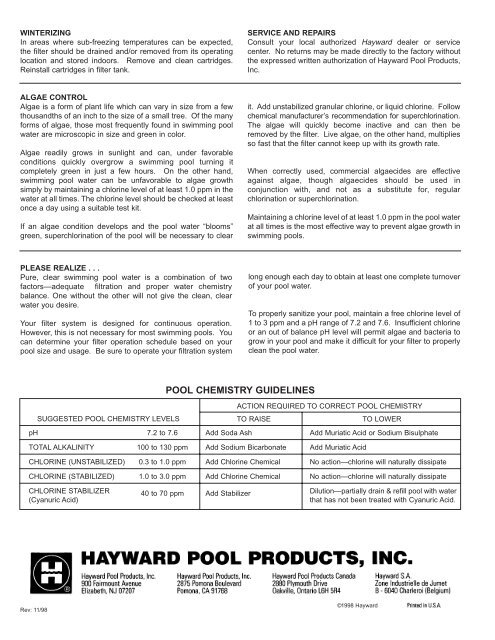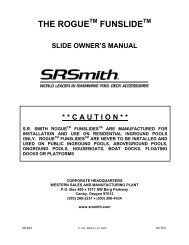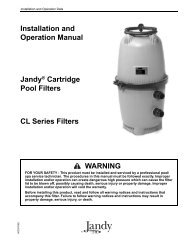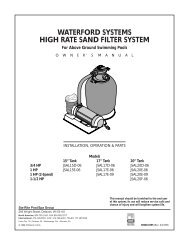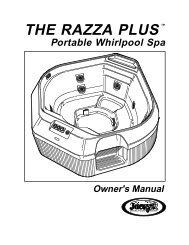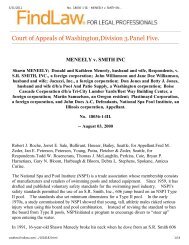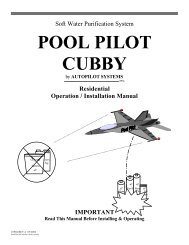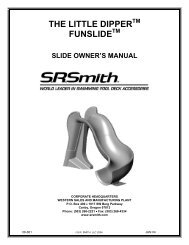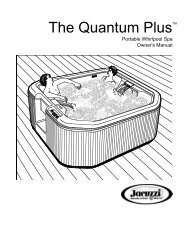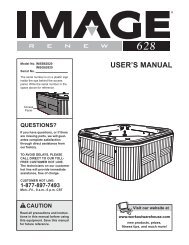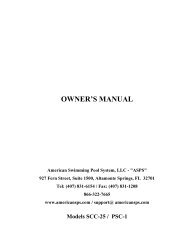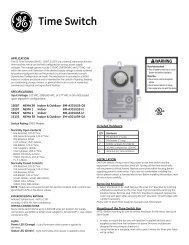SUPER STAR-CLEAR SPECIFICATIONS - Pool Plaza
SUPER STAR-CLEAR SPECIFICATIONS - Pool Plaza
SUPER STAR-CLEAR SPECIFICATIONS - Pool Plaza
Create successful ePaper yourself
Turn your PDF publications into a flip-book with our unique Google optimized e-Paper software.
WINTERIZINGIn areas where sub-freezing temperatures can be expected,the filter should be drained and/or removed from its operatinglocation and stored indoors. Remove and clean cartridges.Reinstall cartridges in filter tank.SERVICE AND REPAIRSConsult your local authorized Hayward dealer or servicecenter. No returns may be made directly to the factory withoutthe expressed written authorization of Hayward <strong>Pool</strong> Products,Inc.ALGAE CONTROLAlgae is a form of plant life which can vary in size from a fewthousandths of an inch to the size of a small tree. Of the manyforms of algae, those most frequently found in swimming poolwater are microscopic in size and green in color.Algae readily grows in sunlight and can, under favorableconditions quickly overgrow a swimming pool turning itcompletely green in just a few hours. On the other hand,swimming pool water can be unfavorable to algae growthsimply by maintaining a chlorine level of at least 1.0 ppm in thewater at all times. The chlorine level should be checked at leastonce a day using a suitable test kit.If an algae condition develops and the pool water “blooms”green, superchlorination of the pool will be necessary to clearit. Add unstabilized granular chlorine, or liquid chlorine. Followchemical manufacturer’s recommendation for superchlorination.The algae will quickly become inactive and can then beremoved by the filter. Live algae, on the other hand, multipliesso fast that the filter cannot keep up with its growth rate.When correctly used, commercial algaecides are effectiveagainst algae, though algaecides should be used inconjunction with, and not as a substitute for, regularchlorination or superchlorination.Maintaining a chlorine level of at least 1.0 ppm in the pool waterat all times is the most effective way to prevent algae growth inswimming pools.PLEASE REALIZE . . .Pure, clear swimming pool water is a combination of twofactors—adequate filtration and proper water chemistrybalance. One without the other will not give the clean, clearwater you desire.Your filter system is designed for continuous operation.However, this is not necessary for most swimming pools. Youcan determine your filter operation schedule based on yourpool size and usage. Be sure to operate your filtration systemlong enough each day to obtain at least one complete turnoverof your pool water.To properly sanitize your pool, maintain a free chlorine level of1 to 3 ppm and a pH range of 7.2 and 7.6. Insufficient chlorineor an out of balance pH level will permit algae and bacteria togrow in your pool and make it difficult for your filter to properlyclean the pool water.POOL CHEMISTRY GUIDELINESpHSUGGESTED POOL CHEMISTRY LEVELS7.2 to 7.6ACTION REQUIRED TO CORRECT POOL CHEMISTRYTO RAISETO LOWERAdd Soda AshAdd Muriatic Acid or Sodium BisulphateTOTAL ALKALINITY100 to 130 ppmAdd Sodium BicarbonateAdd Muriatic AcidCHLORINE (UNSTABILIZED)0.3 to 1.0 ppmAdd Chlorine ChemicalNo action—chlorine will naturally dissipateCHLORINE (STABILIZED)1.0 to 3.0 ppmAdd Chlorine ChemicalNo action—chlorine will naturally dissipateCHLORINE STABILIZER(Cyanuric Acid)40 to 70 ppmAdd StabilizerDilution—partially drain & refill pool with waterthat has not been treated with Cyanuric Acid.Rev: 11/98©1998 Hayward


